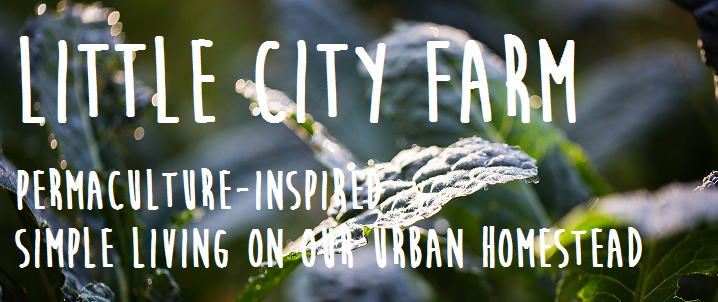
Well, we thought we'd celebrate our successful seedling sale by ordering a special treat of Indian food. Very tasty, but about an hour after eating I broke out in itchy red hives! Upon reading about the possible causes of hives, I found out they are related to allegies (food allergies, seasonal allegies), stress, and various other factors. Connection to restaurant food with examples such as Indian food, Thai food or Chinese food, are common due to the MSG which is often used at these establishments. I should have known - MSG is not only usually hidden in the spice blends, but also in the red and yellow dyes which are sometimes used to colour the curries, etc. MSG is so prevalent in most processed foods that I basically need to stay away from anything with suspect labelling (MSG is hidden under various names and guises), not that I mind as we try to eat a fresh local seasonal diet when we're at home - but it makes going to restaurants treacherous sometimes.
So I tried a few home remedies to deal with the itchy hives - baking soda poultices (short-term relief), homeopathic gel for bites (not effective), and then I drank the miraculous stinging nettle tea. Within about half an hour of taking one strong cup of this tea all the itching subsided and swelling/redness was greatly reduced! It's actually interesting that this healing action is similar to the homeopathic approach - which may seem counterintuitive to some people - that of using a plant which causes a reaction in the body to heal the same condition. For example, the nettle plant can causes red, stinging itching welts (similar to hives) when it's picked without caution. However, taking nettle internally (as tea) over time can build an immunity to this stinging, and drinking nettle tea can also heal hives. In homeopathic medicine there are many such examples, e.g. apis (made from the body of the honeybee) is the main healing remedy for bee stings. Also, I remember seeing this same principle in action while I was working at the Algonquin Tea Company up near Ottawa. If one observes a plant and our reactions to a plant closely, it is possible to give a well-educated guess at it's healing properties. We were washing the dirt off of a massive pile of astragalus root that had just been harvested. While we were cleaning the astragalus root it caused our noses to run and eyes to water - and it turns out that astragalus root is an amazing plant which has been used for centuries in healing colds, flu and breathing problems. Interesting! We only need to take the time to observe plants, understand them and learn from them - the plants will teach us.
Back to the nettle plant - I am so fortunate to have this wonderous plant growing in our woodland section at the back of the yard. Nettle has many healing properties, including being a blood purifier (which means it helps to heal inflammation, eczema, arthritis, etc by tackling these conditions internally). Many herbal sources recommend to take a strong nettle infusion for a week, at least 2 times per year (generally best in spring when it's freshly available) to help with this blood purification. Nettle is also rich in iron, minerals, calcium (increasing bone density) etc etc. It can be made into a soup (cream of nettle is nice), added into sauces or steamed. I made a nettle-kopita last year that we are still talking about. Definitely need to do that again!
But to keep things really simple, the wild food recipe for this weekend is an easy one - nettle tea. Here is how to make a strong healing infusion, which can be taken hot, cool or as iced tea.
May 23: Nettle Tea
Steep 1 large handful of fresh nettle leaves in 2 cups of water that has just boiled. Let steep for at least 30 minutes. This creates a strong medicinal infusion. Sweeten if desired with honey or organic sugar. Drink 1-2 cups nettle tea per day for one week, as a spring blood purification tonic. The root of nettle is also very potent, if not more so than then leaves, so harvest this carefully if you have access to some fresh plants. Root can be made into a tincture (steeped in an alcohol base), or a decoction (boiled in water like a strong earthy tea).

No comments:
Post a Comment